Have they lost evidence of a new physics at the Large Hadron Collider?
- Transfer
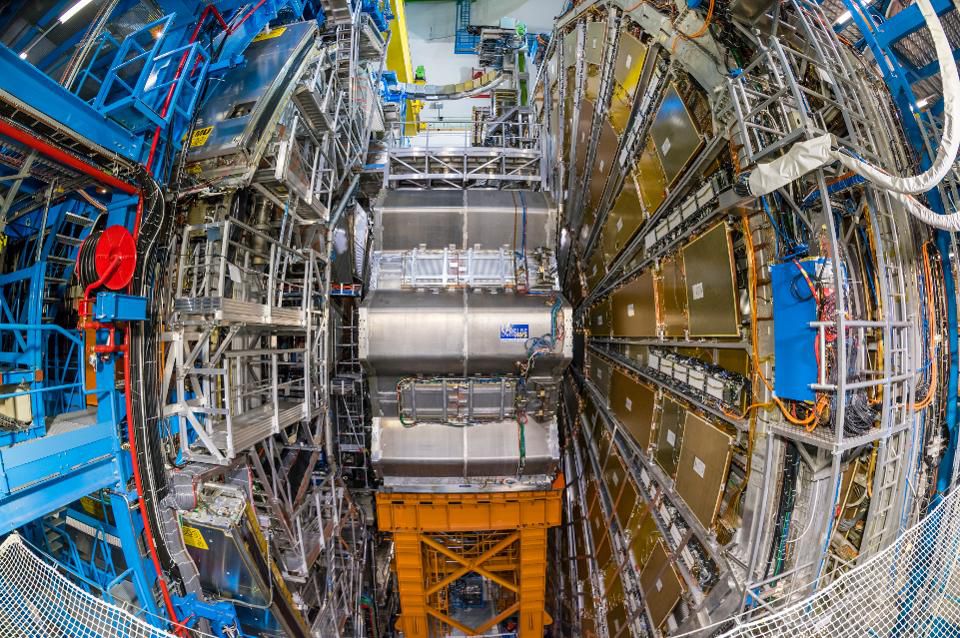
ATLAS particle detector at the LHC at the European Center for Nuclear Research (CERN) in Geneva, Switzerland. The LHC, built inside an underground tunnel with a circumference of 27 km, is the largest and most powerful particle accelerator and the largest machine in the world. But he is able to record only a small fraction of the data he collects.
In the Large Hadron Collider, protons simultaneously spin clockwise and counterclockwise, and collide with each other, moving at the same time at a speed of 99.9999991% of the speed of light. At the two points where the largest number of collisions should take place, huge particle detectors are built: CMS and ATLAS. After the billions and billions of collisions that occurred at such enormous energies, the LHC allowed us to advance further in our hunt for the fundamental nature of the universe and an understanding of the elementary building blocks of matter.
In September last year, the LHC celebrated 10 years of its work by opening the Higgs boson, which became its main achievement. But, despite these successes, no new particles, interactions, decays, or new fundamental physics were discovered on it. And worst of all, most of the data received from the LHC is forever lost.
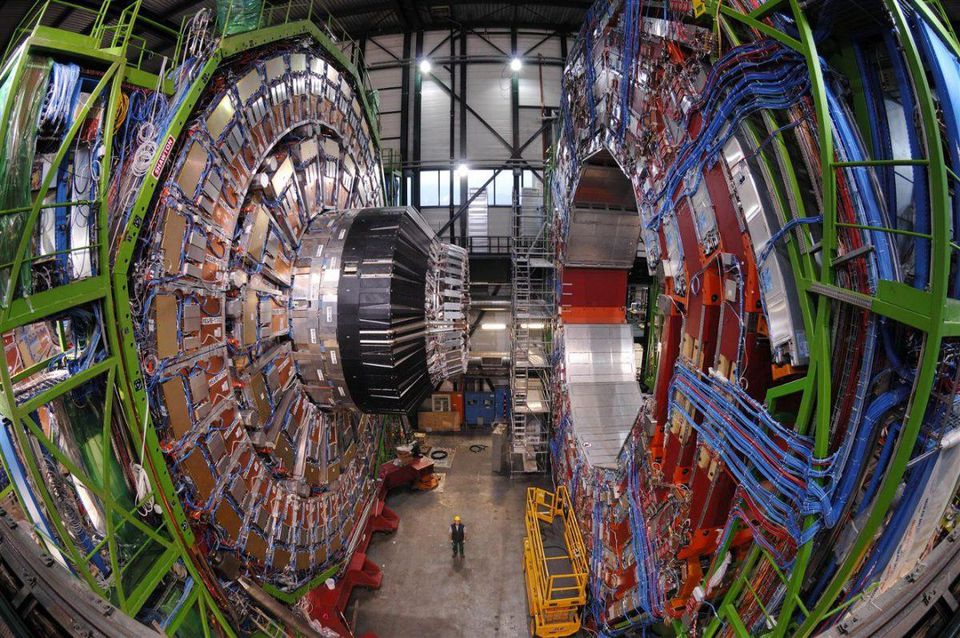
The CMS collaboration, whose detector can be seen in the photo before the final assembly, has released the most comprehensive results of its work. There are no signs of physics that go beyond the Standard Model .
This is one of the most obscure puzzles in high energy physics, at least for ordinary people. The LHC did not just lose most of the data: it lost an incredible 99.997% of them. Exactly this: out of every million clashes that take place at the LHC, only 30 entries remain.
This is necessary, due to the restrictions imposed by the laws of nature, as well as the capabilities of modern technologies. But this decision is accompanied by a sense of fear, intensified by the fact that there was nothing more open than the expected Higgs boson. The fear is that there is a new physics waiting to be discovered, but we missed it, throwing away all the necessary data.
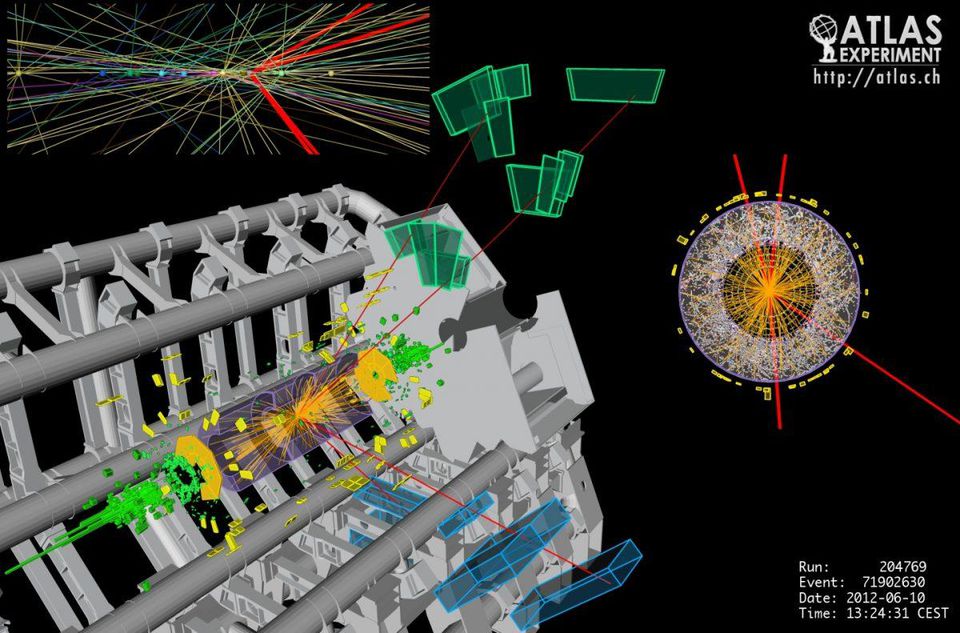
Candidate event for four muons in the ATLAS detector. Traces of muons and antimuons are shown in red, and long-lived muons travel a longer way than any other unstable particles. This is an interesting event, but for every recorded event, there are a million discarded.
But we had no choice. Something would have to be dropped anyway. The LHC works by accelerating protons to a speed close to light, launching them in opposite directions and pushing them together. So particle accelerators worked best for several generations. According to Einstein, the energy of a particle is a combination of its rest mass (which you may recognize as E = mc 2), and the energy of motion, also known as kinetic. The faster you move - or, more precisely, the closer you come to the speed of light - the more particle energy you can get.
On the LHC, we collide protons at speeds of 299 792 455 m / s, only 3 m / s not reaching the speed of light. Colliding them at such high speeds, when they move in the opposite direction, we make possible the existence of particles that could not appear in other conditions.
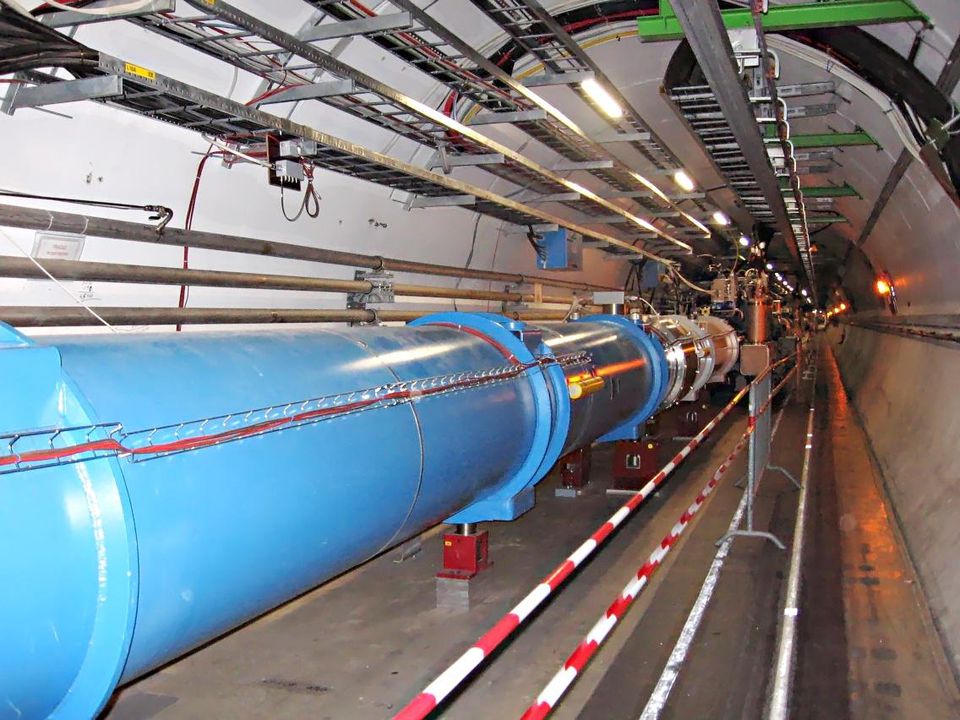
The interior of the LHC, where protons fly at speeds of 299 792 455 m / s, is only 3 m / s not reaching the speed of light.
The reason is this: all particles (and antiparticles) created by us have a certain amount of their inherent energy in the form of a rest mass. When two particles collide, part of this energy must go to the individual components of these particles, to their rest energy and to kinetic energy (i.e., the energy of motion).
But if there is enough energy, part of it can go to the production of new particles! Here the equation E = mc 2 becomes more interesting: the point is not only that the energy E is inherent in all particles of mass m, but also that with enough energy available to us, we can create new particles. At the LHC, humanity has reached greater energies in collisions that generated new particles than any other laboratory in history.

Physicists looked at the LHC for signs of a huge number of options for a potentially new physics, from additional measurements and dark matter to supersymmetric particles and microscopic black holes. But despite all the data collected in these high-energy collisions, evidence of these scenarios was never found.
Each particle accounts for about 7 TeV of energy, that is, each proton receives kinetic energy, which is 7000 times higher than its rest energy. However, collisions rarely occur, and protons are not just tiny — they are mostly empty. To increase the probability of a collision, you need to take more than one proton at a time; protons are injected in groups.
This means that at full powerinside the LHC, during its operation, many small groups of protons rush clockwise and counterclockwise. The length of the LHC tunnels is approximately 26 km, and each group of protons is separated by only 7.5 m. These proton rays are compressed before the interaction at the central point of each detector. And every 25 nanoseconds there is a chance of a collision.
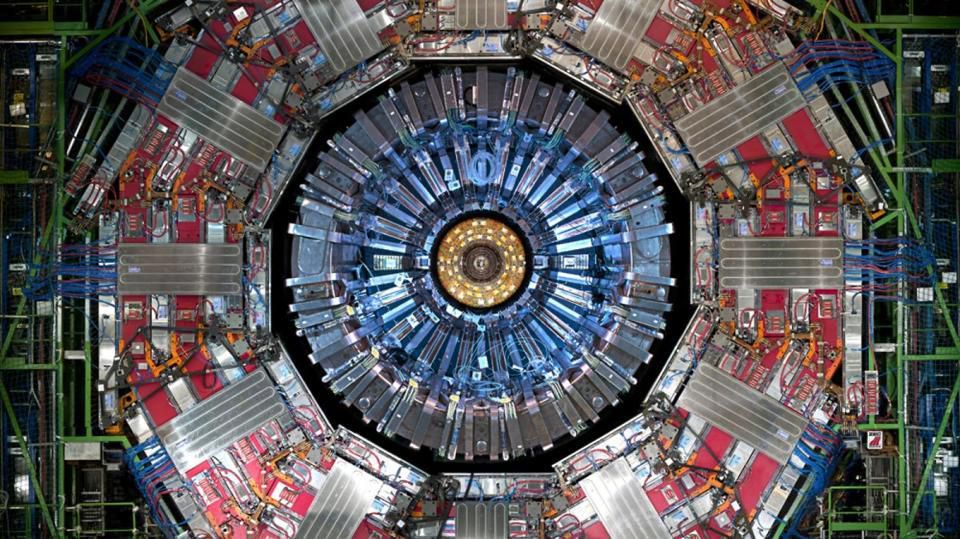
The CMS detector at CERN is one of the two most powerful detectors ever created. On average, every 25 nanoseconds in its center collide new groups of particles.
So what to do? Count on a small number of collisions and record each of them? This will be a huge waste of energy and potential data.
Instead, we pump quite a lot of protons into each group, and each time we encounter rays we get good chances of particle collisions. And each time during such a collision, the particles burst in all directions inside the detector, launching complex electronics and circuits, allowing us to recreate what was created, when and in which place of the detector. This is like a gigantic explosion, and only by measuring all the pieces of shrapnel that flew out of it, we can recreate what happened (and those new things that we created) at the time of the outbreak.

Higgs boson event in CMS on LHC. The energy of this spectacular collision is 15 orders of magnitude lower than the Planck energy, but it is precisely the exact measurements of the detector that allow us to recreate what happened at the point of collision.
However, this raises the problem of collecting and recording all the data. The detectors are large in themselves: CMS measuring 22 m, and ATLAS 46 m. At any moment, particles originating from three different collisions appear inside the CMS, and from six in ATLAS. To record data, you need to take two steps:
- Data must be transferred to the detector memory, limited by the speed of the electronics. Although electrical signals travel almost at the speed of light, we can “remember” only about one in five hundred collisions.
- Data in memory must be written to disk (or another permanent medium), and this happens much more slowly than writing data to memory. You have to decide what to store and what to throw away.

Schematic diagram of how data is fed into the system, sensors are launched, they are analyzed and sent for permanent storage. This is a chart for ATLAS, it is slightly different from a chart for CMS.
We use some tricks in order to guarantee the choice of events wisely. We immediately examine many collision factors to determine whether to study them more carefully or not: this is what we call a trigger. Passing the trigger, we get to the next level. (Also, a small fraction of the data that did not pass the trigger is retained, just in case an interesting signal appears, for which we did not think to make a trigger). Then a second layer of filters and triggers is applied; if the event turns out to be interesting enough to save it, it enters the buffer to guarantee its recording on the medium. We can guarantee that any event marked as “interesting” is preserved, along with a small fraction of uninteresting events.
Since both of these steps are necessary, we can save only 0.003% for further analysis.
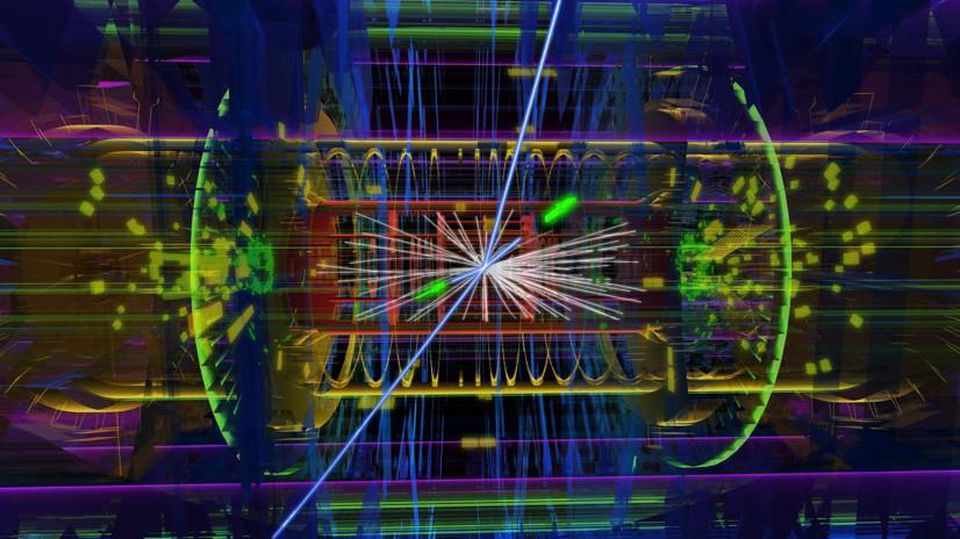
Candidate for the Higgs boson in the ATLAS detector. Even with obvious signs and tracks running laterally, the presence of a huge number of other particles is visible; all because protons are composite particles. This only works because Higgs adds mass to the fundamental components of these particles.
How do we know that we store the necessary pieces of information? Those in which the creation of new particles is most likely recorded, the importance of new interactions is visible, is new physics observed?
When protons collide, for the most part normal particles are born - in the sense that they consist almost entirely of upper and lower quarks. (These are particles such as protons, neutrons and pions). Most of the collisions occur in passing, that is, most of the particles will collide with the detector in or against the direction of motion.
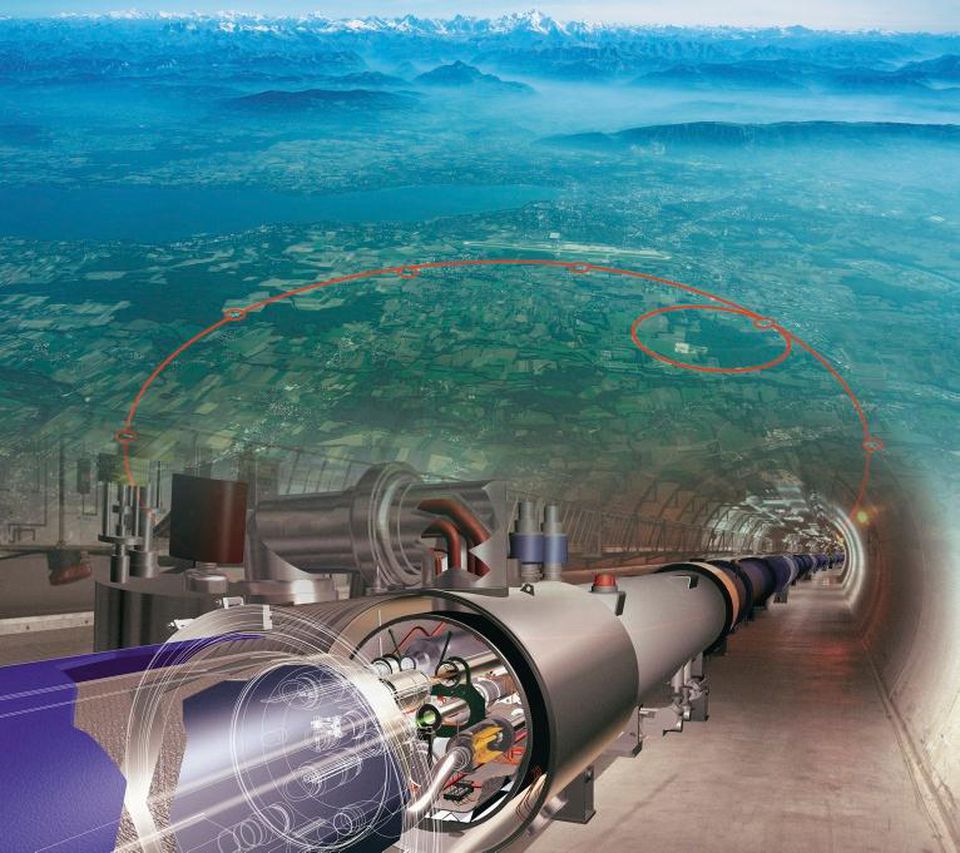
Particle accelerators on Earth, such as the LHC at CERN, can accelerate them to a speed very close to the light speed, but still not reaching it. Protons are composite particles, and because of the movement at a speed close to the light, after collisions, the scattering of new particles goes in or against the direction of motion, and not across.
Therefore, at the first step, we try to study the traces of particles of relatively high energies, going in the transverse direction, and not forward or backward in the direction of the rays. We are trying to write to the detector memory events that, in our opinion, have the largest amount of free energy E to create new particles of the highest possible mass m. Then we quickly scan what is in the detector's memory to find out whether it is worth writing this data to disk. If so, this data can be queued for permanent storage.
As a result, every second you can save 1000 events. This number may seem large - but keep in mind that about 40,000,000 groups of protons collide every second.
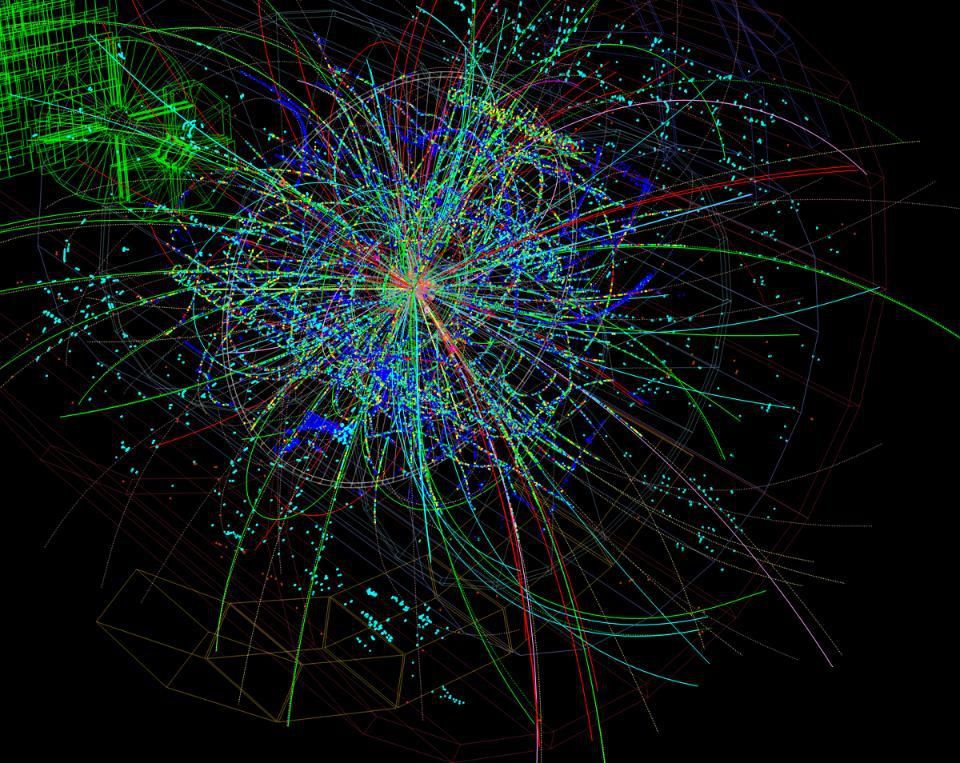
Particle traces due to high-energy collisions - 2014 LHC image. Only one of the 30,000 such collisions is recorded and saved, most of it is lost.
We think that we act smartly, choosing and keeping exactly what we keep, but we cannot be 100% sure. In 2010, the CERN data center reached an incredible milestone: 10 petabytes of data. By the end of 2013, it already contained 100 petabytes; in 2017, a mark of 200 petabytes was passed. But for all these volumes, we know that they threw out - or could not record - 30,000 times more data. We could collect hundreds of petabytes, but we refused and lost many zettabytes of data forever : this is more data than the entire Internet creates in a year .
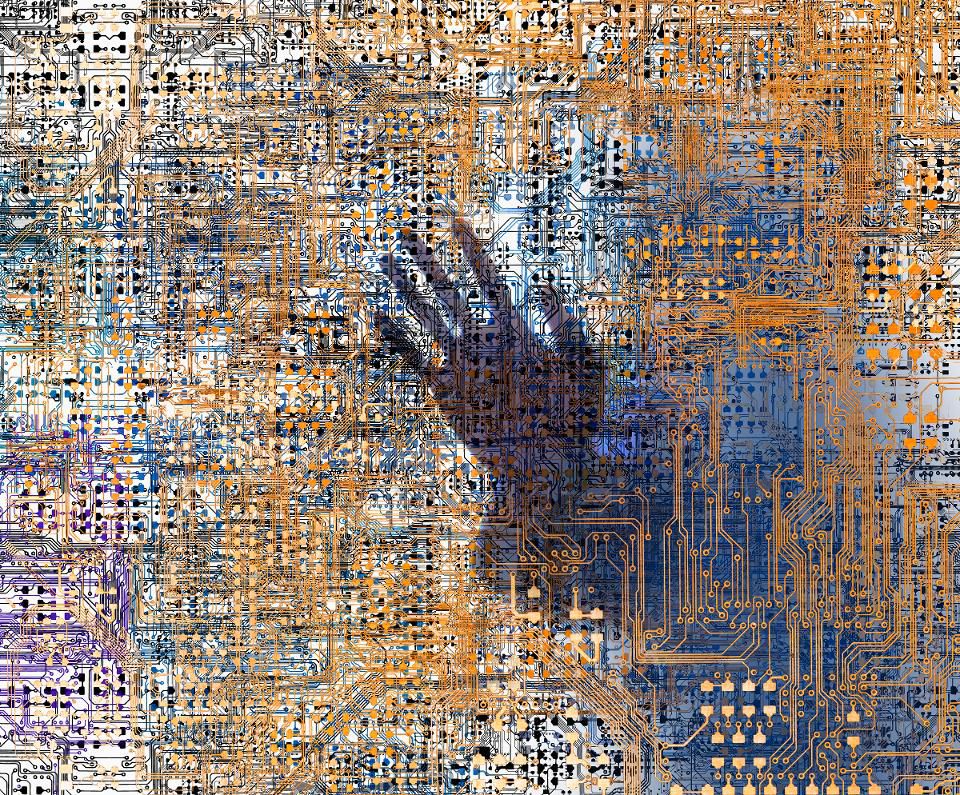
The total amount of data collected on the LHC is seriously ahead of the total amount of data sent and received via the Internet over the past 10 years. But only 0.003% of this data was recorded and saved; everything else is forever lost.
It is highly likely that the LHC created new particles, saw evidence of new interactions, observed and recorded all the signs of new physics. Also, due to our lack of knowledge about the subject of searches, it is possible that we threw all this out and continue to do so. A nightmare about the lack of physics beyond the Standard Modelbecomes a reality. However, the real nightmare lies in the very plausible possibility that a new physics exists, we built the ideal machine for its searches, found it, but did not realize it, because of our decisions and assumptions. The real nightmare is that we are deceiving ourselves by believing in the Standard Model, only because we have studied 0.003% of the available data. We think that we have made a smart decision, saving the selected data, but we cannot be sure of it. It is possible that we ourselves, without knowing it, incurred this nightmare.
You can find more articles on the popular science topic on the website Golovanov.net . See also: what is the meaning of life ; why the San Francisco Garbage Eradication Plan did n't work ; Wherethe remains of normal matter were discovered in the Universe, which they could not find for a long time; is there space and time ; how else can we seek life on other planets; and a series of articles on cosmology, " Ask Ethan ."
I remind you that the project exists only thanks to the support of readers (bank cards, Yandex. Money, webmoney, bitcoins, but at least). Thanks to everyone who has already provided support!
Now you can support the project through the Patreon auto-subscription service !
